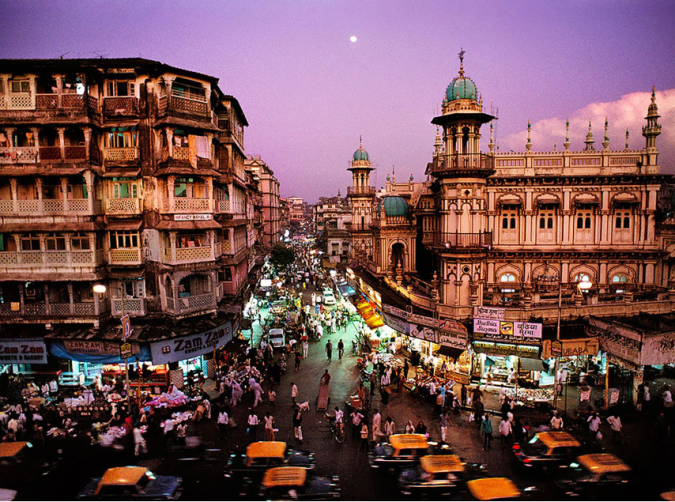Steve McCurry, Moonrise over Mumbai, India (1994). Fujiflex Crystal Archive Supergloss digital C-print. 101.6 x 152.4 cm. Courtesy Sundaram Tagore Gallery.
Capturing The New Wave in Indian Contemporary Art
My visits to Mumbai in 2023 allowed me to delve into the Indian contemporary art scene for the first time, discovering an exciting programme of galleries and meeting some of the most ambitious gallerists and artists. I visited several galleries including Chemould Prescott Road, Chatterjee and Laal, Tarq, Galerie ISA, DAG and the newly opened Nita Mukesh Ambani Cultural Centre among others.
Mumbai’s contemporary art landscape has been steadily evolving since the onset of globalisation in the 1990s and India’s art market boom in the early 2000’s. Commercial art fairs have significantly facilitated this movement. The first edition of Indian-owned art fair Art Mumbai in 2023 with around 50 participating galleries and 5 overseas galleries asserts how Mumbai has been positioned as the central hub for India’s art market. The fair champions an impressive programme of artists displaying accessible works from India and its diaspora as a gateway for the younger collector base. I interviewed Mortimer Chatterjee, one half of directorial duo of leading Mumbai-based gallery Chatterjee on Laalon some of his insights and forecasts on the Indian contemporary art market.
Tanya: How successfully do you think major regional fairs such as India Art Fair and Art Mumbai capture the economic and social wave in the region?
Mortimer: The major India fairs have successfully reflected the current positive trends in the economy, and sales have been robust. As for capturing a social wave, I think again the Fairs have been attuned to the influence art can have at a societal level.
T: How far has the relationship between gallerists, art dealers and artists in the region contributed to the expansion of the art ecosystem?
M: The relationships within the art ecosystem have been professionalised over the last decade or so and this has helped in shoring up and expanding the scene as a whole. Professionalisation has brought with it predictability and agreed processes, which are the cornerstones of a mature market.
T: What were the main challenges faced by Indian galleries during the pandemic and how have these been overcome post-pandemic?
M: Footfall was the main problem. Post-pandemic, we have seen people flock back to galleries and this trend is set to continue as younger people look for shared experiences in the cultural sphere.
T: What role do you think social media has had in making art more accessible and how has this led to an arguably more sustainable market, if at all?
M: Social media has been critical in creating online communities of likeminded gallery goers who are able to share their enjoyment of contemporary art. For galleries, it is now our primary platform for dissemination of information. It has certainly aided a more sustainable market.
T: What are your predictions for the state of the India’s contemporary art market over the next 5 to 10 years?
M: I think there will be more engagement with global art trends with international galleries planting their flags on Indian soil.
The potential of the contemporary Indian art market remains hopeful where its historicised cultural heritage meets contemporary. While Mumbai remains the main focal point, cultural development is evident in Delhi and in regions such as Hyderabad. With the onset of global audiences, the emergence of a new, younger tech-savvy generation of collectors through local art fairs and new regional outposts for local galleries that were once concentrated together, the birth of a new market remains promising.

Gayatri Khanna, ‘Tanya with embroidery piece by artist Sayed Haider Raza. Exhibition: ‘Visions’, embroideries of works by Indian 20th century artists’, Grosvenor Gallery, (June 2024).
Are you a student or recent graduate eager to contribute your voice to ArtTactic’s Editorial vision? We’d love to hear from you!
Reach out to our Head of Editorial, Sandy Dewar (sandy@arttactic.com) for more information.

